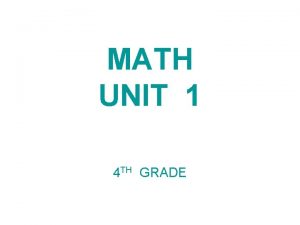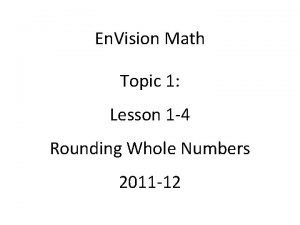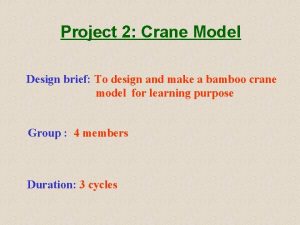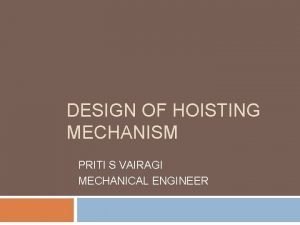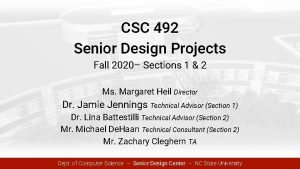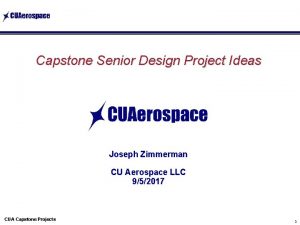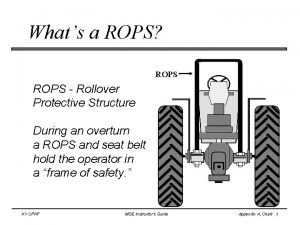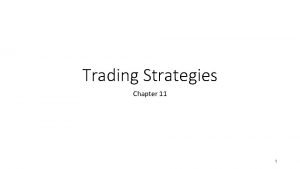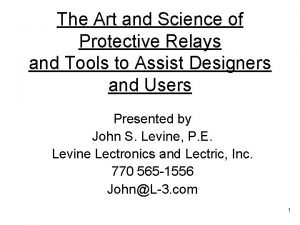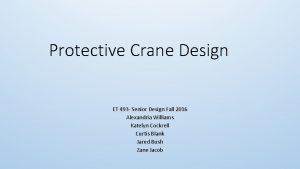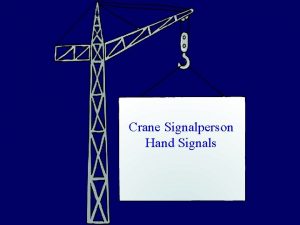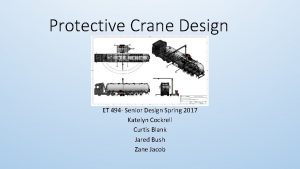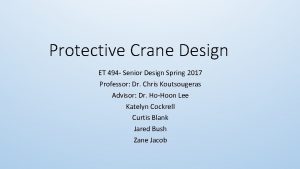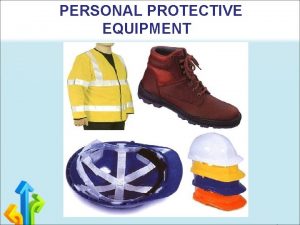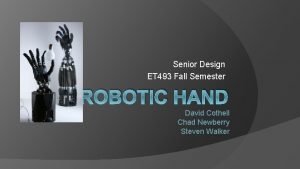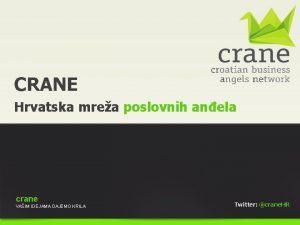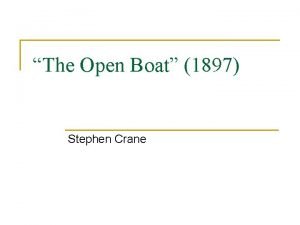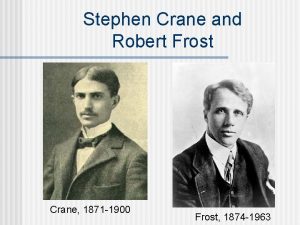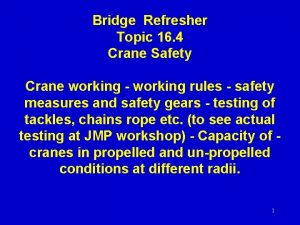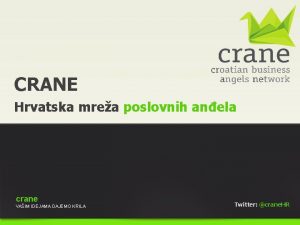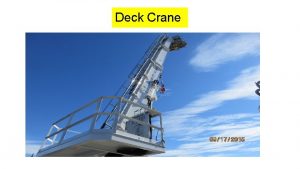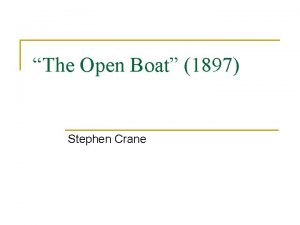Protective Crane Design ET 493 Senior Design Fall
















- Slides: 16

Protective Crane Design ET 493 - Senior Design Fall 2016 Alexandria Williams Katelyn Cockrell Curtis Blank Jared Bush Zane Jacob

Design Goal • The purpose of our project is to design and fabricate a protective crane to be used for protection against falls and general purpose tasks. • The crane needs to be fairly mobile for different terrains and to allow the user to move freely. • The crane will need to be moved with ease and it will also have to allow extended movement while being used.

Our Goals • Use skills learned through this project to become a valuable asset to companies we work for in our future. • Gain a full understanding of the crane design, planning, and the estimated cost of the fabrication of the crane. • Design the crane with safety and cost in mind.

Setup We will be using 3”x 2”x 1/4” steel tubing for the frame. The size of the trailer will be approximately 6’-8” by 10’.

Setup

Components • There will be two six-foot tubing sections running across the middle of the trailer, three feet away from each other and intersecting with the two ten feet tubing sections running down the middle of the trailer. • There will be eight jacks, two jacks mounted on each corner of the trailer, with tubing that slides out of the main frame. This will allow the jacks to extend out creating a larger workplace and more sturdy base. • We will need a trailer axle with leaf spring mounts. We decided on a 1000 lb. axle since it will just have to support the weight of the crane and not any loads because the jacks will be handling that.

Components cont. • The trailer will have lights for towing which will require an electrical hookup to a vehicle. • We will drill two holes in both the frame tubing and the tubing that slides in and out that the jacks will be attached to. The holes will be for when the smaller tubing is extended; you can insert two locking pins in the two holes. • We decided to use two holes to reduce the amount of bending in the smaller tube. Also, one hole will be drilled through both pieces of tubing so that when it is retracted a pin can be inserted to prevent the smaller tubing from sliding out while towing.

Setup The crane will be used as a relatively popular jib crane design. The crane will include an electric winch, which will be powered by a set of batteries mounted to the trailer.

Components • The electric winch will include a drum that has been redesigned to hold a polyester strap. • The boom and pillar of the crane will be constructed of hollow cylindrical tubing and be extendable. • The pillar will also have a pivoting base, to allow the user to turn the boom while in operation. • The pivoting base will require some sort of bearing system, quite possibly ball bearings. • In addition, the pillar will require a locking system to keep the boom from swinging while in use. The boom of the crane will be mounted to the pillar using adjustable brackets.

Components cont. • The pillar will be mounted to a track that will run in the middle of the trailer. • At in the end of the boom, a smooth finished leader will be mounted to allow the strap to flow smoothly and keep it aligned with the boom itself. • The leader will have to be designed from scratch, since nothing like it is available on the market today. Stainless steel will more than likely be used to construct it. • Like the pivoting base, the leader will also require a bearing system. This will reduce friction and allow the leader to last longer and run smoother.

Setup

Problem Constraints • Finding an adequate way to adjust the stability jacks while they are under the truck. This may be solved by using jacks that can be adjusted from a distance. • Finding an adequate way to adjust the height of the boom. This may be solved by possibly adding an internal hoist system. • Finding an adequate way to adjust the angle of the boom, while it is in the air. This may be solved by adding a turnbuckle that connects the pillar to the boom.

Responsibilities • Curtis will be in charge of designing the frame of the trailer, which will also consist of the welding and structuring. • Jared will be in charge of designing the axle of the trailer, designing/mounting of the extendable stability jacks, and the wiring for the lights on the trailer. • Zane will design the drum and leader to accommodate the polyester strap. He will also design the bearing system for the pivoting base and the adjustable brackets that connect the pillar and boom.

Responsibilities cont. • Katelyn will be in charge of designing the extendable pillar and boom of the crane, while also designing the locking system for the pillar. She will also be responsible for figuring out a way to adjusting the height of the boom. • Alexandria will be responsible for coming up with an adequate power supply and wiring for the winch, while also designing a track system for the pillar of the crane.

Timeline • September 18 – 30: Meet with advisor to get project approval • October 1 -15: Created proposal/presentation • Rough design of crane/trailer • October 16 - 30: Get estimates for materials • Begin designing major components of crane/trailer • October 31 - November 14: Finish designing major components of Crane/trailer • November 15 – 30: Start re-configuration of drum and design of Leader/sheave • Create final proposal/presentation

Questions?
 Hymn 493
Hymn 493 Sda hymn
Sda hymn Round 493 295 to the nearest ten thousand
Round 493 295 to the nearest ten thousand 160 656 rounded to the nearest hundred thousand
160 656 rounded to the nearest hundred thousand Round 138 to the nearest ten
Round 138 to the nearest ten Write the design brief of a crane
Write the design brief of a crane Crane mechanism design
Crane mechanism design Ucf senior design
Ucf senior design Linda milor
Linda milor Ncsu csc senior design
Ncsu csc senior design Ee senior design project ideas
Ee senior design project ideas Roll over protective structure (rops)
Roll over protective structure (rops) Rachel brooks attorney vancouver wa
Rachel brooks attorney vancouver wa Protective put payoff
Protective put payoff Topical agents definition
Topical agents definition Protective ozone layer
Protective ozone layer The art and science of protective relaying
The art and science of protective relaying


